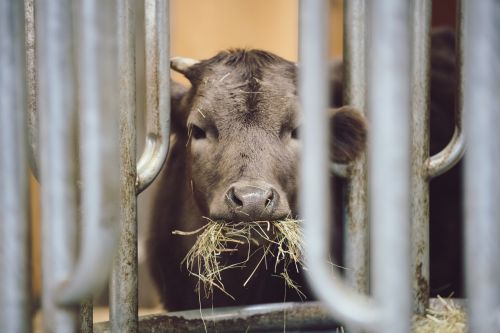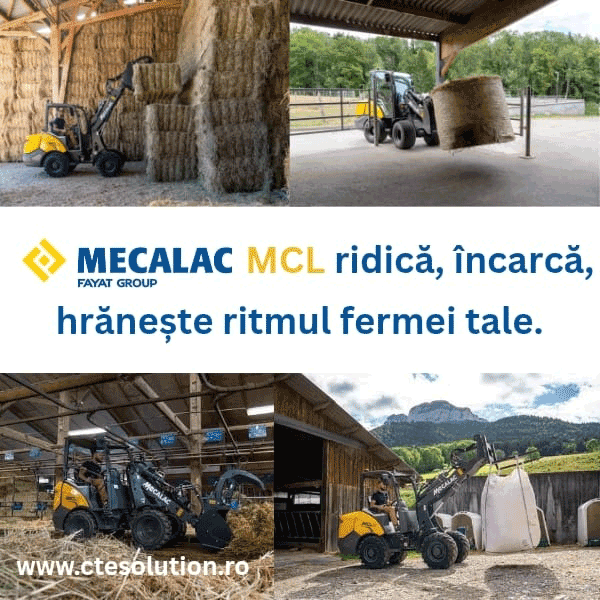797

Technological change has been the main driving force for increasing agricultural productivity and promoting its development in all OECD countries. In the past, the choice and adoption of agricultural technologies were made with the aim of increasing production, productivity, and agricultural incomes.
For many decades, policies for agriculture, trade, research and development, education, training, and advisory services have had strong influences on the choice of technology, the level of agricultural production, and farm practices.
Now, however, there are other priorities, as highlighted at the workshop “Adoption of Technologies for Sustainable Farming Systems - Wageningen Workshop Proceedings” organized under the aegis of the OECD at the prestigious Wageningen University in the Netherlands.
Complex Choices
Agriculture is becoming increasingly integrated into the food chain and the global market, while regulations regarding the environment, food safety and quality, and animal welfare are also having an increasing impact. Farmers and processors face new challenges in responding to the growing demand for food, being internationally competitive, and producing high-quality agricultural products.
At the same time, they must meet sustainability goals in the context of ongoing agricultural policy reform, further trade liberalization, and the implementation of multilateral environmental agreements, as agreed by OECD ministers.
Today, farmers, advisors, and policymakers face complex choices. They are confronted with a wide range of technologies that are either available or under development. They must deal with uncertainties about the effects these new technologies will have along the agri-food chain and the impact that a wide range of policies will have on the sustainability of agricultural systems.
Additionally, there is increasing pressure on agricultural research and consultancy budgets that must be managed.
However, technology adoption is a broad concept. It is affected by the development, dissemination, and application at the farm level of existing and new biological, chemical, and mechanical techniques, all of which are included in farm capital. However, farm capital and culture are influenced by education, training, advisory services, and information that underpin farmers' knowledge.
Moreover, adoption includes technologies and practices from the entire agri-food sector that have an impact at the farm level. Finally, it should be noted that most of these new technologies come from outside the agricultural sector.
Concept with Different Implications
The concept of a sustainable farming system refers to agriculture's ability, over time, to contribute to overall well-being by providing sufficient food and other goods and services in ways that are economically efficient and profitable, socially responsible, while also improving the environment.
It is a concept that can have different implications regarding appropriate technologies whether viewed at the farm level, the agri-food sector level, or in the broader context of the domestic or global economy.
One of the key policy conclusions of the workshop was that technologies for sustainability cover the entire spectrum of agricultural systems. All agricultural systems, from intensive conventional agriculture to organic farming, have the potential to be sustainable at the local level. Whether these are implemented depends on farmers adopting the technology and appropriate management practices in the specific agro-ecological environment within the appropriate policy framework.
Unfortunately, there is no single system that can be identified as sustainable and no unique path to sustainability. There can be a coexistence of a more intensive agricultural system with more extensive systems which generally provide environmental benefits while meeting the demand for food.
However, it is important to recognize that the most sustainable agricultural systems, even extensive systems, require a high level of farmer skills and management to function.
Analytical Aspects
Based on discussions, case studies, and thematic analyses from all OECD countries, the main analytical conclusions of the workshop can be summarized as follows:
- The adoption of technologies for sustainable farming systems is a dynamic challenge and issue for farmers, extension services, agribusiness, and policymakers.
- The agricultural sector must use a wide range of evolving technologies and practices in many different agricultural systems and structures to meet a variety of changing and heterogeneous demands from consumers and the public for food, fiber, and other goods and services provided by agriculture, often with uncertain outcomes in terms of their effects on sustainability.
Demand Drives Technology Adoption
Farmers have always sought new technologies as a way to reduce costs. Additionally, higher incomes, greater knowledge, and improved communication channels lead consumers to demand lower-cost, higher-quality food increasingly produced through environmentally friendly methods in many countries, with more variety, consistency, and year-round availability.
At the same time, consumers increasingly demand that their food be produced using techniques that conserve natural resources, limit environmental pressures, and pay greater attention to rural viability and animal welfare.
The trade liberalization process broadens the sources of supply and the degree of competition. Changing demands are reflected in policies and are strongly communicated to farmers by the media, pressure groups, food retailers, and processors.
The ways in which technologies are developed and adopted differ within the OECD. The different priorities and concerns related to achieving sustainability in agriculture have led to a range of approaches and levels at which they are implemented. Some countries rely heavily on market signals and voluntary, industry-driven approaches to guide the development, dissemination, and adoption of technologies.
Others place a greater emphasis on government intervention. Such government involvement varies from a facilitative to a mandatory role and includes direct funding for research, payments for dissemination and adoption, legal restrictions, information, and advice. Additionally, the general context of agricultural policies and the level of support are key factors in determining the technologies adopted at the farm level.
Furthermore, efforts in research, education, and farmer training, advisory, and information services are shifting towards balancing economic efficiency with ecological and social sustainability.
Historically, the focus of research and advisory services has driven increases in production, productivity, and profits, whereas now the emphasis is on achieving these goals sustainably, often involving changes in farming practices and the use of different technologies.
As has often been the case, agriculture relies on and adapts technologies developed for other sectors of the economy. Although research is increasingly problem-based rather than seen as exogenous, it is not always clear which technologies are profitable for agriculture to develop and which farming practices will contribute to sustainable agriculture in the long term.
Defining Priorities
In the past, research was often directed towards solving technical problems. Now, it aims to define research priorities and identify the best technologies to meet the current and future demands of society. These priorities include biological pest control, biotechnology, information technology, bioremediation, precision agriculture, integrated and organic farming systems.
Other issues, however, relate to the educational and training system, institutions, and the relative role of public and private research, where efforts are also important. Additionally, some sustainability issues may not be best addressed through technological options but simply by changing the level and type of agricultural production and its location.
Technologies are increasingly developed on a global market, but with an impact on sustainability beyond the farm. Both conventional and newer technologies, particularly those related to biotechnology, information, and precision agriculture, are global businesses.
The dissemination of these technologies is often within the national market, but their application is local. However, the effects on farm-level adoption extend beyond it. With more vertical integration, either through formal ownership structures or contractual relationships along the entire food chain, decisions regarding the adoption of technologies at the farm level are often inseparable from decisions made elsewhere in the food chain.
Uncertainty and Trade-offs
Adopting technologies for sustainable agricultural systems is multidisciplinary. Considering the broader range of objectives related to transitioning towards a more sustainable approach to agriculture, compared to those aimed at agricultural production, multiple disciplines must work together.
But adopting technologies for sustainable agricultural systems involves uncertainty and trade-offs. Technologies that can contribute to an economically efficient agricultural sector and financial viability for farmers, while improving environmental performance and being socially acceptable, will offer triple dividends for sustainability.
Given the resource constraints, there are inevitably trade-offs in achieving these sustainability goals. Furthermore, the objectives are moving targets that need to address new issues and changing priorities. Technological developments evolve rapidly, and information about the costs and benefits of adopting technologies in agriculture is often imperfect.
Thus, decisions about technology adoption are made in a climate of uncertainty with a significant element of trial and error in application, speed, and scale of adoption, which varies considerably among farmers. This can have significant implications for the structure of farms and the number of farmers able to survive financially in the future.
Beneficial Factors
Research and development efforts, the trend towards better education and training, changing advisory focuses, faster and cheaper means of information dissemination and exchange, the availability of financial resources, pressures from consumers, non-governmental organizations, the media, and the general public are contributing to facilitating the adoption of sustainable agricultural technologies.
Many policies, including those related to agriculture, environment, and research and development, provide a mix of incentives and disincentives for technology adoption. However, environmental policies themselves increasingly constrain farmers' actions, such as zoning regulations, animal welfare standards, and public health policies.
But a combination of many different economic, structural, behavioral, and policy factors in a wide range of different situations means that there is no simple or unique explanation for what drives farmers to adopt certain technologies.
Constraining Factors
Often policies send conflicting signals that hinder technology adoption. Some agricultural policies encourage the expansion of agriculture on ecologically fragile lands, over-exploitation of natural resources, and do not require farmers to take the environment or other sectors into account.
Many support policies are capitalized into land values, encouraging higher production intensity and influencing the type of technologies adopted. Some agricultural policies impose environmental constraints on farmers as a condition for receiving support, but at levels higher than to compensate for environmental damage caused by other agricultural policies. In some countries, environmental benefits provided by farmers are remunerated, in others, they are not.
Inadequate levels of education, access to advice, and pressures on financial resources for some farmers slow the adoption of technologies, especially those requiring larger-scale operations and where the necessary initial investment costs are high.
Farmers need to face the right signals for adopting appropriate technologies. They will invest in and implement sustainable agricultural technologies and practices if they expect the investment to be profitable if they have the right education, information, and motivation, and if government policies set clear goals.
Where the environmental benefits of using sustainable technologies are not expected to accrue to farmers but to people outside of agriculture, and where there are no markets for benefits, adoption levels might be suboptimal from society's perspective. Equally, if the costs of the environmental effects of current agriculture are paid by other sectors, farmers will have no incentive to adopt environmentally sustainable technologies.
Policy Aspects
The workshop identified several areas that policymakers might consider. The overall policy framework needs to be consistent and coherent, particularly in the context of agricultural policy reform, trade liberalization, and multilateral environmental agreements.
This requires a more integrated approach to setting goals for sustainable agriculture, defining research and development priorities, and targeting and implementing policy measures at the appropriate level.
For example, where the sustainability issue is local, objectives might be best addressed through local solutions. However, in practice, achieving policy coherence across a range of governments, ministries, and other institutions is a considerable challenge.
Technologies can help reconcile the need for sustainable and profitable food production. In this case, the challenge is to identify which technologies work best in specific circumstances and to define and provide the appropriate incentive framework to facilitate achieving sustainability goals in ways that enhance overall well-being, in accordance with the policy principles agreed upon by OECD ministers.
Reconciling food production with environmental objectives can sometimes be achieved through the adoption of appropriate technologies. Sometimes, these objectives can be reconciled simply by changing the level, type, and location of agricultural production.
However, reconciling these objectives means that farmers' rights and responsibilities regarding technology and practice adoption need to be clearly defined and enforced (considering the current distribution of property rights), and thus the situations in which they are entitled to compensation (the provider gets) or obligated to pay (the polluter pays).
The allocation of property rights has significant implications for the distribution of income, wealth, and equity. Therefore, greater attention is needed in monitoring the adoption of technologies for sustainable agricultural systems and in the accountability of research efforts and policies for technology dissemination and adoption.
Declining Research Funding
Public funding for research into agricultural technologies is declining in many OECD countries. Public funds are limited and, therefore, need to focus more on addressing public good issues rather than near-market issues.
Methodological, analytical, and informational norms and needs regarding the design and adoption of appropriate technologies also require resources. Some countries are concerned about the capacity of extension services to handle the wealth of detailed and complex information available to farmers, highlighting the need for transparency in research and information.
From a policy development perspective, the information and policy capacity requirements are new, large in scale, and will pose an intellectual challenge for the coming decades. This is also likely to require substantial resources.
Governments and the OECD can help identify and analyze technologies that work, in which circumstances, and the most cost-effective ways of disseminating and adopting technologies.
They can also provide insights into what helps and what may hinder the adoption of technologies capable of achieving sustainability goals, contributing to the development of criteria for evaluating technology adoption, analyzing appropriate ways to measure and evaluate progress, and shaping alternative policies and market options. (Photo: Freepik)





